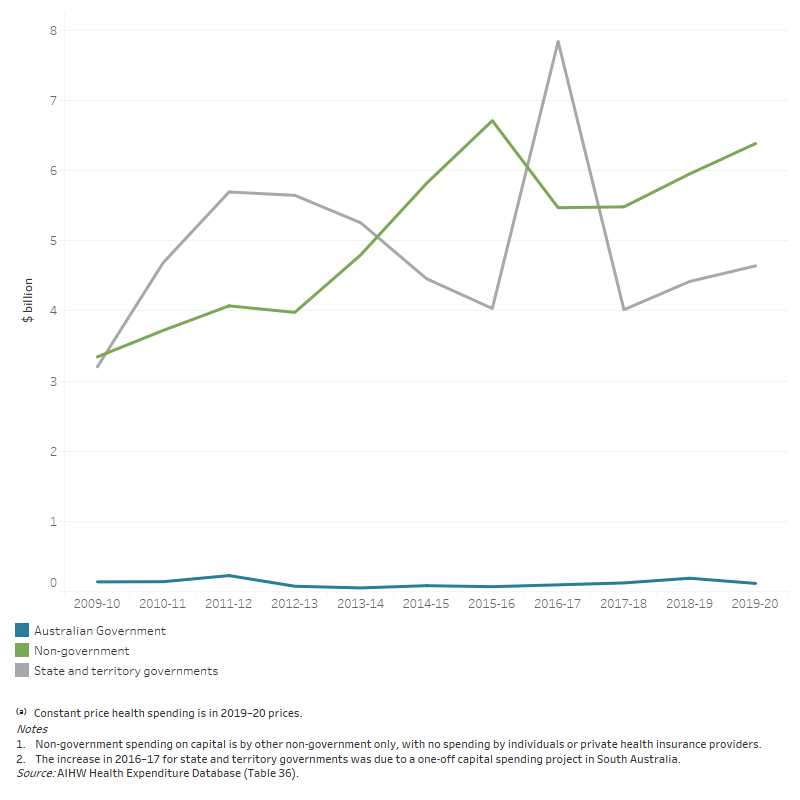Capital spending
Capital spending is an important component of total health spending. However, capital outlays often relate to relatively high-cost items that have useful lives extending over many years. As such, growth in capital spending from year to year can be difficult to interpret. For example, 2016–17 capital spending estimates were affected by a large amount of capital spending on the new Royal Adelaide Hospital in South Australia. This one-off spending increased 2016–17 data and contributed to the 28.2% decrease in capital spending in 2017–18.
Capital spending on health facilities and investments in 2019–20 was $11.1 billion. Over the decade to 2019–20, spending on capital accounted for around 5.7% of total health spending per year on average (Table 2).
From 2009–10 to 2019–20, capital spending by state and territory governments averaged around half (48.5%) of capital spending, the non-government sector averaged 50.2% and the Australian Government averaged 1.2% (Figure 31).
Figure 31: Capital spending, by source of funds, constant prices⁽ᵃ⁾, 2009–10 to 2019–20
The line graph shows that capital spending by State and territory governments and non-government has been volatile in the decade 2009–10 to 2019–20. State and territory government spending on capital was $3.2 billion in 2009–10, increasing to $5.7 billion in 2011–12, decreasing again to $4.0 billion in 2015–16 before spiking to $7.8 billion in 2016–17, and was $4.6 billion in 2019–20. Non-government spending on capital fluctuated over the decade from $3.3 billion in 2009–10 to $6.3 billion in 2019–20. Australian Government spending on capital has been low and relatively steady over the same period, at $115 million in 2019–20.



